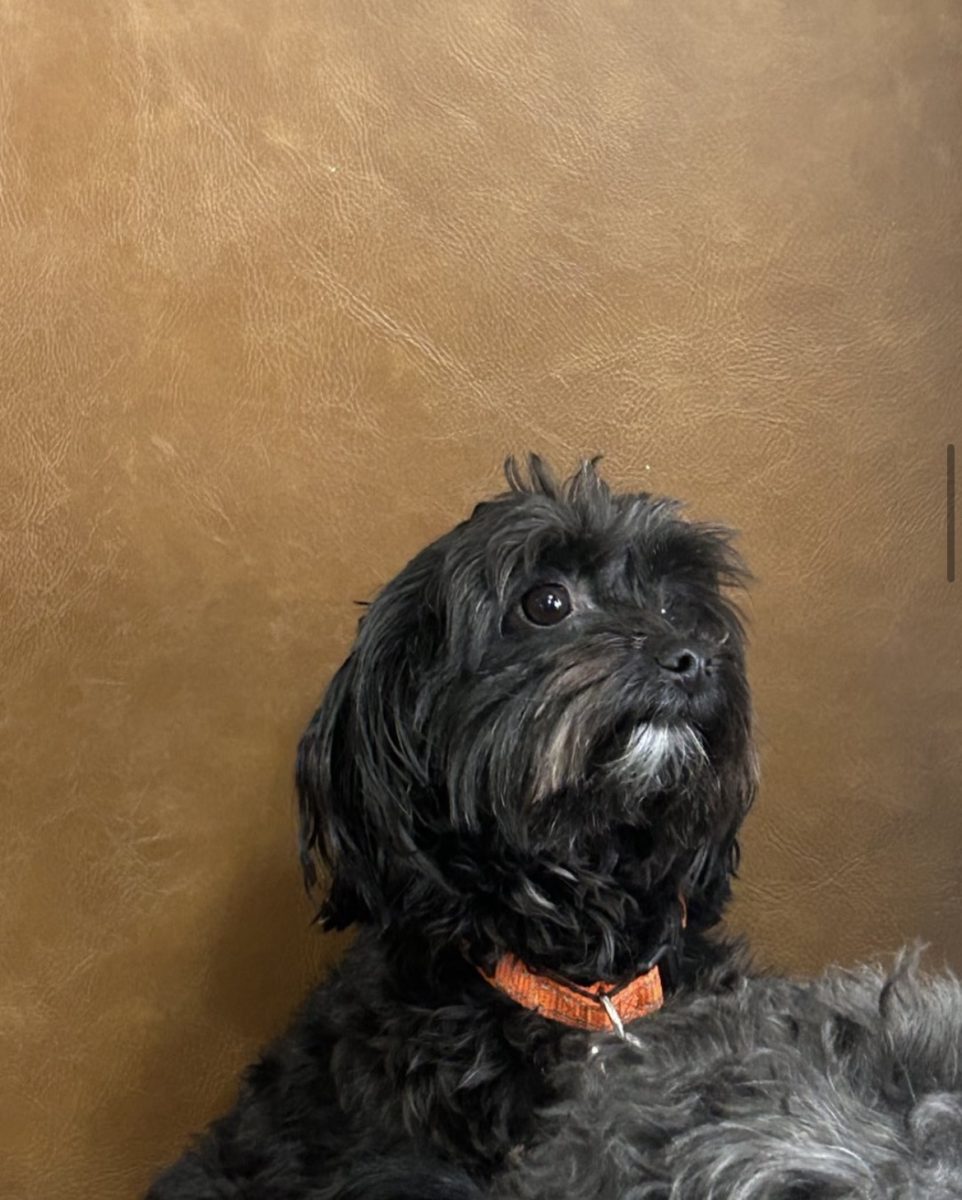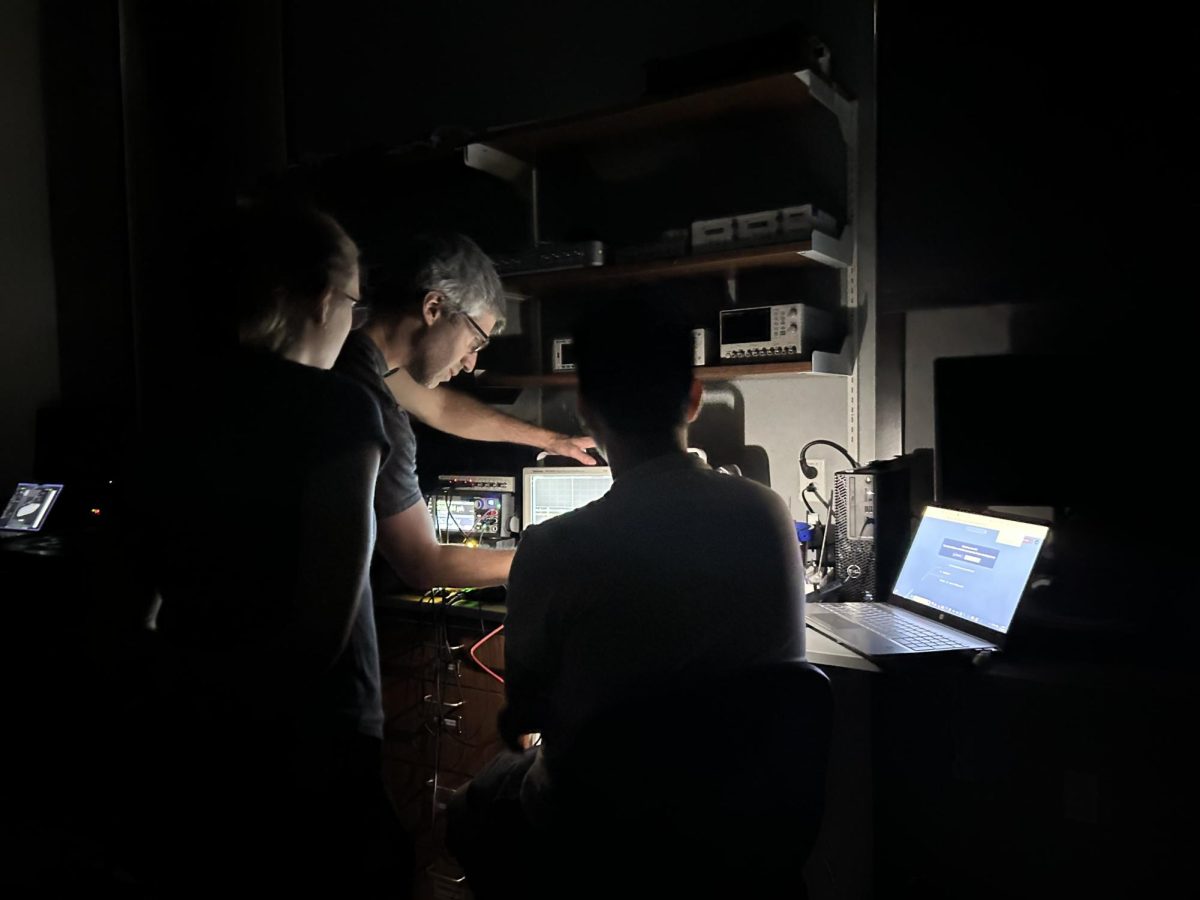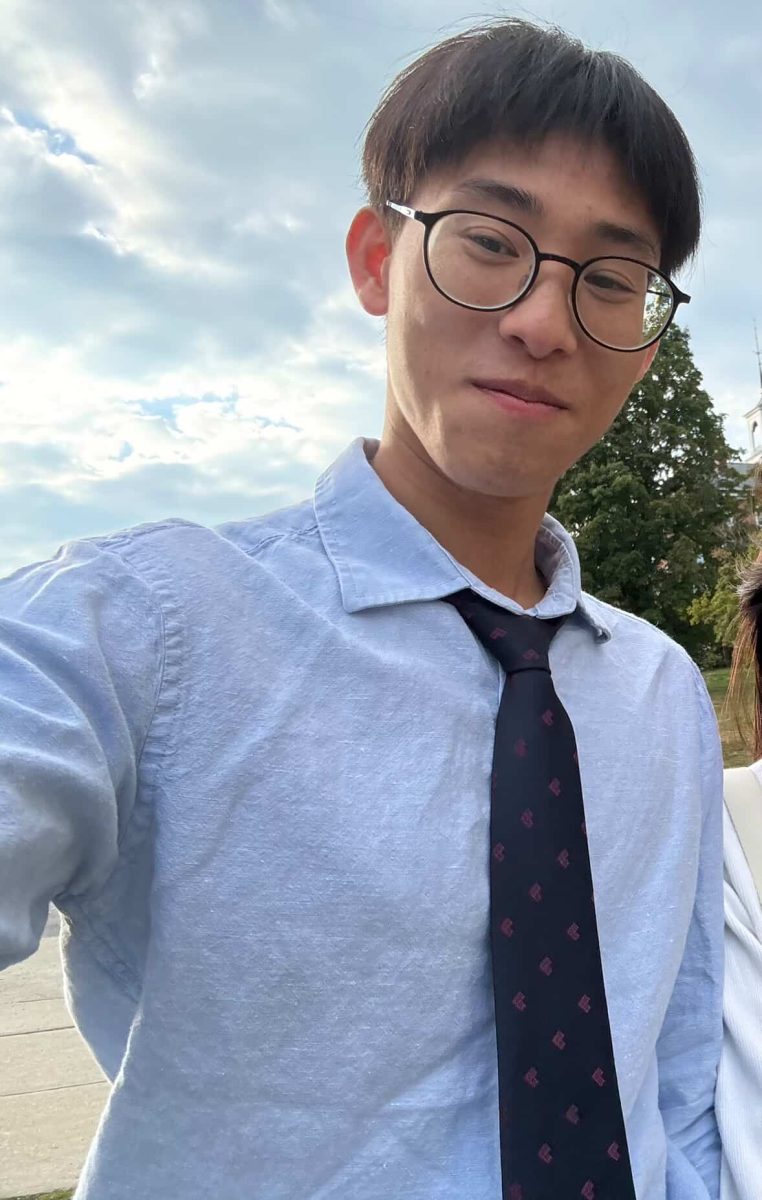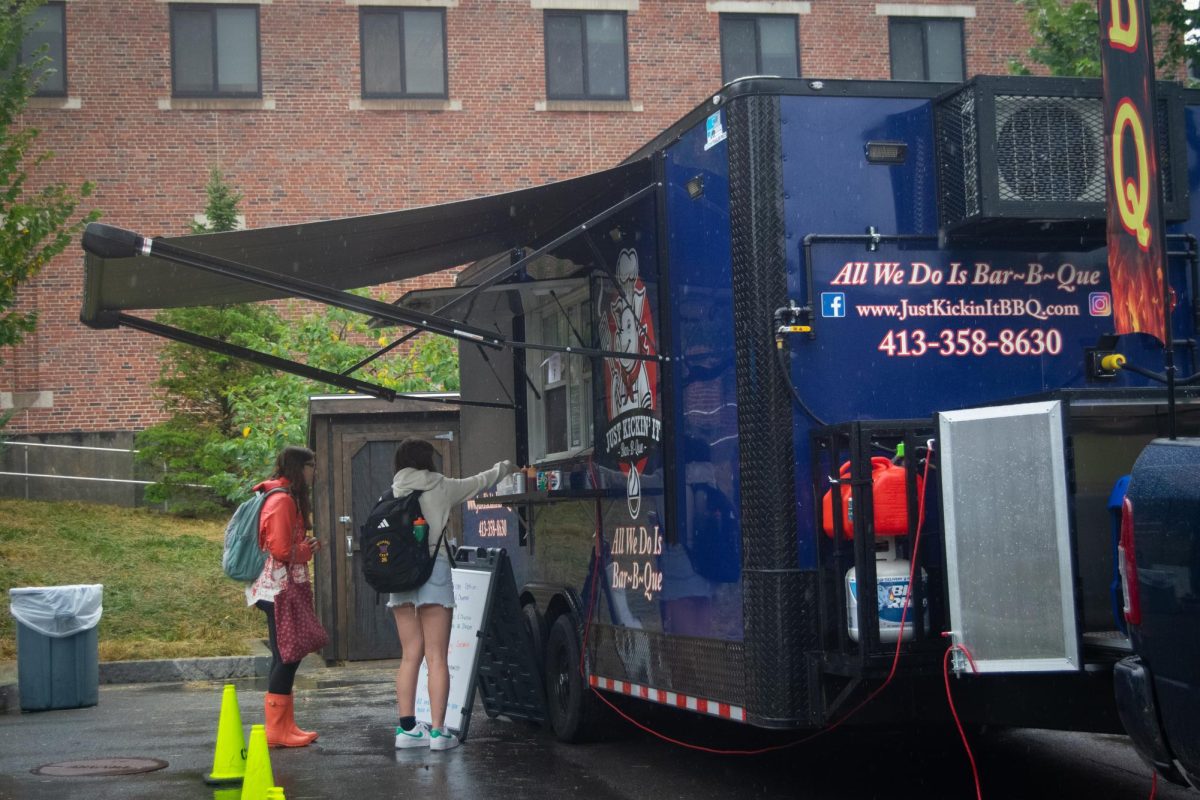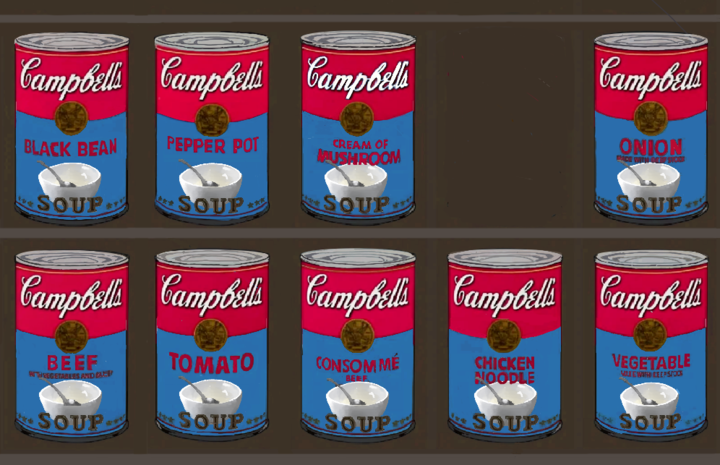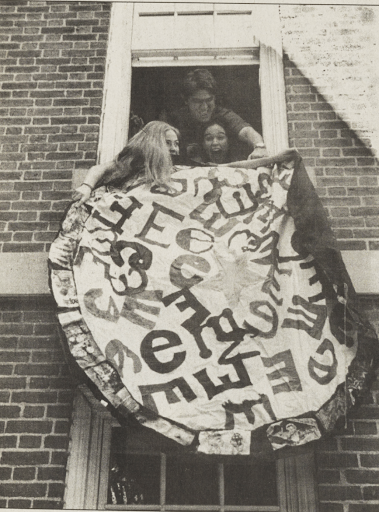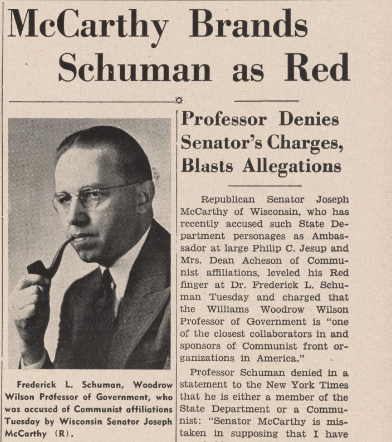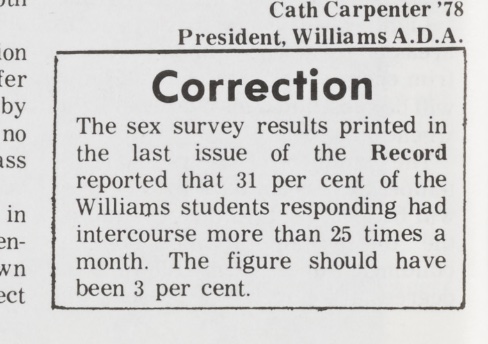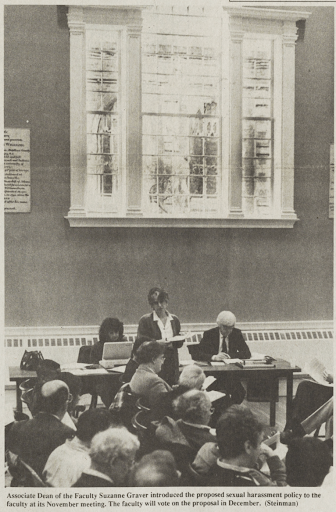
“This Week in Williams History” is a column that looks back at memorable moments in the College’s past through articles in the Record. This week in history, the Record condemned hazing, the chemistry department hosted a party, Vista pushed for a Latino/a studies program, and admitted students visited the College.
April 14, 1904: The Record calls for an end to hazing
On April 14, 1904, the Record board urged students at the College to stop hazing after observing the practice’s pervasiveness on campus. “Hazing has recently been made so conspicuous as to deserve our thoughtful consideration,” the Record wrote in an editorial.
In its condemnation, the Record drew a distinction between two different types of hazing: first, “mild horseplay,” and, second, hazing that “commits what are really personal indignities upon the hazed, and [that] is bitterly though powerlessly resented.”
Though the Record acknowledged the potential efficacy of the former, more merciful genre of hazing — that “foolish horseplay undoubtedly does serve to inculcate in every freshman proper deference” — they rebuffed the latter as a more severe genre. “[Severe hazing] accomplish[es] nothing except the inevitable effect of arousing a bitter feeling of resentment and a desire for the retaliation against the hazers and [is] not productive of any considerable subduing result,” the editorial board wrote.
“The Record believes therefore that this severe form of hazing is only in rare cases promotive of good, although always amply fruitful of discord and bad feeling,” the editorial continued. “So long as hazing is permitted…it will continue to do no good and to provoke much rancor.”
The Record proposed the following fall — the fall of 1905 — as an ideal end date for all hazing at the College. On September 26, 1907, the College officially banned the hazing of first-year students.
April 17, 1937: Chemistry department holds “lollypop party,” delights students
On April 17, 1937, the Record reported that the College’s chemistry department held an April Fools’ Day party in the chemistry lab that centered around lollipops. “All-day suckers figured prominently in the evening’s activities, prov[ing] that education is not exclusively all work and no play,” the Record reported.
Organized jointly by students and professors, this lollipop party served as a reminder of the collaboration between students and faculty at the College. In the words of the Record, “The traditional relationship between students and faculty has for so long been a strained, unnatural proposition that it is a relief to find this unusual instance of informal, and apparently pleasurable, give and take between the teachers and the taught.”
The party also offered evidence that it is indeed possible for students to find happiness in the field of chemistry. “[The event] stands as proof of the fact that somehow, somewhere, the students of chemistry at Williams have been made to feel that the study of atoms and reagents is actually enjoyable,” the article reported.
The Record encouraged other departments to follow suit and hold events similar to the lollipop extravaganza.
April 17, 2001: Students push for Latina/o studies program
An April 17, 2001, Record article reported that Vista, the College’s Latino/a and allies student organization, met with senior staff at the College to begin the formal creation of a Latina/o studies program.
Vista arrived at the meeting with a petition signed by 1,032 students and left with an optimistic outlook about the future of the program, the Record reported. “The administration see[s] the value of a [Latina/o] studies program here at Williams,” said Tom Baez ’03, then-central coordinator of Vista.
Then-President of the College Morton Schapiro said he supported the program’s creation. “My view, and that of my colleagues on the senior administrative staff, is that there is a compelling academic reason to have a [Latina/o] studies program here at Williams,” he told the Record. “The number of signatures on the petition was quite impressive, but even more impressive is the fact that this is an area of the curriculum that deserves to be highlighted and supported.”
Despite their excitement and the meeting’s success, some members of Vista remained skeptical of the College’s commitment to take action beyond statements. Although senior staff members had already verbally promised to create the program, students wanted direct action.
“[President Schapiro’s] most frequently used words at the meeting were ‘take my word,’’’ Baez said. “Previous students have heard these same words, which leave us a bit skeptical.”
“Words aren’t enough,” Baez added. “We have the majority student interest with the petitions, now this majority is waiting for [Latina/o] studies to expand.”
In 2004, following years of protest and advocacy — including a hunger strike in 1993 — the College officially launched its Latina/o studies program.
April 17, 2001: Pre-frosh provide their input
In April of 2001, at the legendary Purple Key Fair — still a hallmark of the Williams Previews experience — a member of the Record asked prospective students why they were considering attending the College. Their answers offered insight into the diverse range of reasons that drew students to the College.
“Because the guys here are premium, top-choice man-meat,” Kim Wong said.
“To obey a dying man’s last words,” Ben Cronin ’05 said.
“It’s far enough from my parents that they can’t visit me often,” Jane Stimpson ’05 said.
“The food sucks less here than at Amherst,” Brian Sylvester said.




